Men Are Taking Grooming More Seriously Than Ever
Over the last century, the male approach to grooming appears to have gone full-circle. In the Victorian period, men took incredible pride in their appearance. Their hair was flawless and carefully styled. Personal hygiene was a priority, and grooming was essential. Consider the fine gentlemen that strutted the streets of London in top hats and suit tails. There was a gentlemanly approach to style and grooming, which was then quickly forgotten. The male pride in grooming slowly faded away, leading to generations of ‘manly’ laziness.
The man reverted back to an almost caveman like qualities of personal grooming neglect. It was a bad time for the male style, yet it was considered socially acceptable, and even desirable. Only in the last ten years have we emerged in a place where it is acceptable and encouraged to take pride once again. The rise of male grooming, styling, and sculpting is now unstoppable. Many will argue we have gone too far! With excessive beard styling, overly ‘feminine’ styles, and extra care, has the pendulum swung too far? In this post, we’re looking at the past and the present of male grooming.
‘Traditional’ values
In the last two generations, traditional male grooming values were fairly non-existent. It has typically been acceptable to let oneself go, and ignore basic personal grooming. The rugged look is often charming, but there’s a line between unkempt and dirty. Boys were encouraged to run around, get dirty, and care little for their personal appearance. Of course, at the same time, young girls were bombarded with rules about personal appearance. Let’s not get dragged into that debate just now, but consider the different paths laid out before us. It lead to a huge disparity in how men and women approached their personal grooming. For women, it became a cultural ‘necessity’. For men, personal grooming was optional.
The rise of the ‘metrosexual’ man
In the last decade, however, things have changed significantly. For the better, if you ask us. We have come some way to redressing the balance between male and female expectations. Along with that, the behaviour and approach to grooming has changed drastically. We quickly saw the rise of the ‘metrosexual’ man. It’s a strange term that came to define a man who cares about his appearance deeply. It is used to describe a man who is meticulous about his appearance, and spends a lot of money on grooming products. This approach to male grooming has since become more common and accepted behaviour. So, what exactly does this mean, and how are men approaching their grooming differently?
Beyond the barber
For the ‘traditional’ man, grooming meant popping into the barber once every two months. The unruly mess is shaved, tidied up, but certainly not styled. Unless, of course, running a comb through it counts as styled. Nowadays, men recognize that this is not enough, both for hygiene reasons and grooming reasons. A professional haircut (once every month, ideally) is the minimum standard. It’s also advisable to chat with your stylist about your hair. What is the best product for your hair type? What styles work for your face structure? These are conversations that haven’t been had for a hundred years in male barber shops. However, the modern man is going well beyond the barber, and taking on a rigorous grooming routine in between visits too.
Beard sculpting
The traditional man rarely had time for sculpting the perfect stubble, let alone styling a beard. A wet shave every morning set you up for the day, and covered all the bases. Arguably, this is actually more hygienic than the modern beard sculpting. However, it was certainly a labour of laziness, and a doctrine of simple, no-nonsense grooming. More recently, a good layer of stubble has become a simple, but effective grooming technique. It’s clean and tidy, but also attractive and stylish. Many will argue we have gone too far with some beard grooming techniques. (Just take one walk around New York’s Williamsburg or London’s Shoreditch to see for yourself). However, there’s no denying that the stylish approach to facial hair has overtaken the practical approach of old.
Skin care
Skin care is something that males have consistently avoided and ignored. Meanwhile, it has always been an essential part of a woman’s morning routine. Do men have magical skin that generates its own moisturizer? Are men immune to dry skin and the issues that seemingly plague only women? No, of course not. It is pure nonsense, exacerbated by cultural expectations and norms. Men should adopt skin care routines as much as women should, and that approach is becoming more common. Moisturizer and serums are now created especially for men. They are designed to soften the effects of shaving, and keep skin feeling hydrated and healthy.
Manscaping
Attitudes towards manscaping (and ladyscaping for that matter) tends to fluctuate with trends. In the ‘70s, it was a case of ‘anything goes’, but now we are taking a little more care. Men, in particular are becoming more attentive in the nether regions, and tidying up somewhat. After all, it’s only polite really.
Personal hygiene
It’s not just the approach to grooming and styling that has changed, but an all-round approach to hygiene. In the past, it was somewhat socially acceptable for men to appear dirty and messy. Now, that is becoming much less acceptable, and certainly not attractive. Instead, care is now taken to wash regularly, shave those pesky nostril hairs, and spray deodorant. In fact, scent is becoming a big part of the male approach to grooming. Using aftershave as a signature scent has quickly overtaken the practical applications.
Hair grooming
Of course, the most obvious grooming and styling change of all is the hair. Only ten years ago, you could probably list the standard male haircuts on one hand. Short-back-and-sides and… well… that was about it. Nowadays, men are open to more styles, and they’re certainly being more adventurous. They are embracing styling products, and adopting new techniques.
Overall, it’s a positive step forward for male grooming. At the very least, it’s a win for personal hygiene, and that’s something we can all celebrate.
10 Signs You Are Shaving Wrong
No matter whether you’re a man shaving your face, or a woman shaving her legs, there’s a good chance you’re doing it wrong. But don’t worry, we’re here to help.
What follows are ten different ways you may be shaving wrong, which leads to hurting your skin, promoting ingrown hairs, and not achieving a close shave.
Don’t Rush
Proper shaving takes more than five minutes. To get a good, clean shave, it’s best to take at least ten minutes—most professional shaves take between 12 and 25—for preparation, shaving, and aftercare of your skin. Treat yourself.
Don’t Shave Before Your Shower
There’s no reason you should ever shave before your shower. Instead, always try to take a hot shower before shaving. The steam from the hot water works to open up your pores and soften your skin. This allows your razor to glide over your skin and give you a closer shave.
Don’t Lather with Your Hands
First-timer shavers are typically taught to lather on their shave cream by hand, but that’s not proper shaving technique. Instead, use a shaving brush. Designed to lift hair and prepare it to be cut, a shaving brush gives you a closer shave that lasts longer and it has that old school shaving charm.
Don’t Use a Dull Blade
Razor blades are expensive, so it’s understandable that you want to get as many shaves as possible before changing blades, but that doesn’t mean that’s what’s best for your skin. To get a close shave, you must use a sharp blade, so replace your blade after five to ten shaves for the best results.
Don’t Shave Against the Grain
While you may think that shaving against the grain gives you a closer shave, it’s bad for your skin and causes ingrown hairs. Shave in the same direction your hair grows. If, after that, you feel you still need a closer shave, re-lather, then gently shave against the grain.
Don’t Keep Your Skin Dry
If you’re not keeping your skin wet when you shave, you’re doing it wrong. It’s best to use a lot of hot water when you’re shaving. This keeps your skin soft and your pores open, letting your razor get closer to the skin before cutting the hair.
Do Splash with Cold Water
After you’re done shaving, your pores are open and your skin is likely slightly irritated. By splashing icy, cold water on your face or legs post-shave, you encourage your pores to close and tighten up your skin, giving it a fresh and healthy appearance.
Exfoliate
Exfoliating pre-shave is one of the best ways to make your shave last longer. By removing the dead skin cells before you shave, you’re guaranteeing a closer cut and less chance of getting ingrown hairs or razor bumps. If you don’t exfoliate for every shave, try to do it at least twice a week.
Don’t Throw Away the Razor Cap
There’s a reason that all razors come with a cap, and it’s not so you don’t cut yourself. The razor’s cap keeps it from collecting dust and dirt, all of which can cause irritation to your skin, dull your razor, and lead to nicks and cuts.
Don’t Keep Your Razor in the Shower
While it’s good to shave in the shower, beneficial actually, it’s not the best place to store your razor. Being surrounded by wetness and steam in a shower makes razors dull quickly, and can even lead them to rust. If you must keep your razor in the shower, put it in a little bit of oil to protect it.
Are You Ready for the Ultimate Shave?
If you’re tired of rookie shaving mistakes and dealing with cheap razors, it’s time to consider one of the razor subscriptions available through shavemob.com. Our razors have been considered the best razor for men and the best razor for women, and you can get them delivered right to your door.
It doesn’t matter whether you opt for the 3-blade, value priced razors, or top of the line 6-blade razors — when you shop at shavemob.com, you get the best value razor you could ever ask for.
Stop making shaving mistakes today and start your ultimate shave experience with ShaveMOB!
4 Steps to Get Your Skin Ready For Spring
Shaving Tips for Breaking Out Of The Winter Hibernation
The sun is shining, the weather’s started to heat up; it’s no secret that summer is officially on the way. For the first time in months, you might actually feel like leaving the house in something other than your cozy jeans and woolen jumper. You might even fancy braving it and going bare-legged in a sundress or stylish skater skirt.
When it comes to going out bare-legged, the first thing on most of our minds is the frizz. Obviously, there’s nothing wrong with going for the natural look – lots of ladies prefer to leave their body hair untouched. However, if you prefer to go hair-free, the first thing on your mind is probably de-fuzzing your legs. As well as anywhere else that will be on show – your bikini line and underarms, for example.
The question is, what are the best ways to go about summer shaving? When you’re flaunting your bikini body on the beach, the last thing you want is razor bumps spoiling your look. To help you get ready for summer and ensure you have shaving covered, we’ve put together this handy guide. Packed full of tips and ideas, this should help to ensure that this summer your skin is beautifully hair-free.
Have a pre-shave routine
It’s not just about moisturizing after shaving. Oh no, if you want beautifully smooth skin, you need a pre-shave routine. Before your shave, exfoliate the area that you plan on shaving. Be it your bikini area or legs, exfoliating with a gentle abrasive can help to remove dead skin cells and soften skin. Exfoliating will also help to remove any bacteria from around the hair follicles, reducing the risk of infection.
Once you’ve exfoliated, the next step is to soak the hair in warm water. This will help to soften it further, making it easier for your razor to cut through it. This will allow you to achieve a smoother and closer shave. For this, a hot shower or bath works wonders. If you want to achieve a beautifully smooth shave, preparing properly, is important.
Invest in a great razor
The most important thing you can do to ensure your skin looks perfect post-shave is invest in a good shaver. It’s easy to think that all shavers do the same thing, but that’s not the case. If you want a close shave that doesn’t tear apart your skin – cheap razors are renowned for this, you need to invest in a quality shaver. It might cost you a little more, but a good quality shaver is definitely, worth the investment.
High quality razors are often your best bet, as in most cases the quality seems to be higher. For a beautifully smooth shave that leaves your skin intact, opt for a razor that’s made by Venus, for example. A brand like this that’s been around for years can be trusted. The products are always high-quality because the brand has built up a name for itself in the beauty industry. Shavemob.com offers a range of razors of a high-quality that are perfect for achieving a smooth, sleek shave. The range of offer includes a selection of high-quality Venus razors.
Never go without shaving cream
Shaving cream is what allows the blade of a razor to glide seamlessly over the skin. This helps to prevent those pesky knicks that bleed for hours. If you’ve ever had a shaving cut, you’ll know not only how much those bad boys sting but also how long they bleed for. There are two ways to prevent cuts when shaving. One, investing in a good quality shaver, which we’ve already covered. And two, using a shaving cream.
While you can go DIY with your shaving cream – conditioner can work as an emergency alternative, but you won’t get the same results. Shaving creams and balms have been made especially to help soften the hairs and make gliding a shaver over your skin easier. So if you want to achieve a smooth shave and beautiful skin, it’s worth investing in a tube of The Ultimate Shave shaving cream. As well as shaving cream, it’s also worth treating yourself to a tube of aftershave balm. This helps to soothe and calm red skin after shaving, preventing bumps from forming.
Beat those pesky ingrown hairs
While shaving is one of the easiest ways to achieve beautifully hair-free skin, it is also a common cause of ingrown hairs. Ingrown hairs are caused when shaving traps the hair follicles underneath the surface of the skin. The most important thing for preventing ingrown hairs is shaving with a sharp, hot shaver. This means running your razor under the hot tap before shaving. Just make sure it’s not so hot that it will burn your skin.
If you’ve already got ingrown hairs that need dealing with, don’t shave until you’ve sorted them. You can pick up a special solution for dealing with these from your local pharmacy that helps to encourage the hairs to pop back out again. If that fails to work, the next step is to attempt to pull the hair out yourself. Pop a hot washcloth over the area where the hair is and disinfect your tweezers with hot salt water. Above the surface of the skin you should see the tip of the hair follicle, using your tweezers, gently tug it out. You don’t want to pluck the hair just turn it around so that it’s growing in the right direction. If you can’t do it yourself, make an appointment to see your doctor.
Summer is all about showing the skin. Which is why if you like the hair-free look, getting your shaving right is so important. If you want summer skin that you love, it’s crucial that you take shaving seriously. Invest in the right shaver, use a good quality shaving balm and always make sure to soften the hair before shaving. Take the tips and advice above on board, and this summer you’ll feel happy and confident with how sleek and smooth your post-shave skin looks. Summer is all about having beautiful glowing skin, so taking shaving seriously is a must.
4 Signs You need to Change your Razor Blade
While the cost of razors continues to increase the inconvenience of going into a store to replace them is getting worse. Men and women try all kinds of tricks to extend the life of their razors to save money and make life easier, but sometimes people stretch things a bit too far. So here are 4 signs that you need to change your razor blade. .
1 – The Dartboard Face
You know you have pushed it a little too far extending your razor when you show up to meetings looking like your face was used in a dartboard game. You want people to take you seriously in meetings but it is hard to listen to a guy when he’s bleeding all over his presentation. If you do get some cuts and scrapes, try a little lip balm to seal up the cuts.
2 – It’s Time to Mow the Razor Blade
When your razor blade starts growing things on it and changing colors, it may be time to consider changing it. Even the best steel in the world is going to eventually turn colors and you don’t want that anywhere near your body. Not only is it going to hurt, but you will need a tetanus shot after every shave. The best razor blades are coated in titanium or ceramic to last longest with no rusting or growth.
3 – Your 5 o’clock Shadow Appears at 8AM
You spend time shaving in the morning, but you never feel quite right. You show up at the office and your face itches like crazy. Your co-workers keep asking you if you had a rough night. This may be a sign that you have pushed the limits of your razor. Consider a change.
4 – You Begin to Look for Options to Supplement your Shave
You just don’t feel like your razor is getting as close as you want so you look for ways to trim. Let’s face it, a good razor will give you about ten great shaves and 14 good ones but when you need to use one of these to trim, it may be time to consider changing blades.
With all of the high quality, low cost options available on the internet for shaving supplies, like The Ultimate Shave from Shavemob.com, there really isn’t a need to stretch that blade out any longer. Have them delivered to you when you need them so you can look your best all day, every day.
A Brief History of Shaving
For thousands of years, men and women have been hacking and burning the hair from their bodies. It’s something of a love-hate relationship, and shaving has become a daily part of life. Did you know, for example, that men spend approximately 3,000 hours of their life shaving? That’s a lot of time in front of the mirror, folks.
However, we certainly aren’t the first to have such a long and rigorous shaving routine. In fact, the Egyptians, Ancient Greeks, and Romans were all meticulous with their hair removal. Even our oldest ancestors, the cavemen, would create rudimentary shaving tools.
Whether it’s practical or aesthetic reasons, shaving has been a huge part of our culture. Today, we’re taking a light-hearted look back over the years to see how things have changed.
The Stone Age
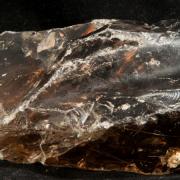
From cave paintings, murals and tapestries, we can see quite clearly that hair removal was common. However, this wasn’t through vanity (people in the Stone Age had bigger things to worry about!) Instead, it was a more practical thing to avoid frostbite and severe cold in their face. As any man will tell you, a long beard has the tendency to get very wet during a rainstorm! Now, imagine having a wet beard every day over the freezing cold winter. It could quickly freeze, causing devastating frostbite in the face. Remember, this was 100,000 years ago, during the ice age, so the air was chilly. During this time, they used seashells as tweezers. 60,000 years later, it seems they were using flint and sharpened stones like the ones pictured above. That has to be a rough shave.
Egyptians
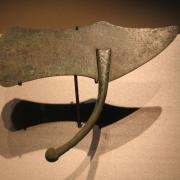
The Egyptians were perhaps the first to start shaving out of vanity. Having said that, the original motive for hair removal was heat. The Egyptian temperatures were raging hot, and excess body hair was hacked off. It was also a simple health solution. The Egyptians were among the finest inventors of early medicine, and they realized that disease travelled in beards, as it still does ladies. Eventually, however, it became a sign of civilization. The Egyptians understood a clean shave as a mark of sophistication. Rugged, hairy faces were considered outsiders by contrast.
Barbarians
It’s around this time that the term ‘barbarian’ emerged, and it was all due to facial hair. Barbarians were those who neglected their personal hygiene, leaving their faces hairy. In other words, they were ‘unbarbered’. Our dedication to shaving actually helped name an entire culture of barbarians, which seems to be returning.
Greeks and Romans
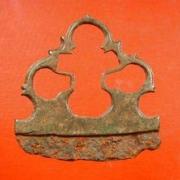
The Ancient Greeks and the Romans adopted the grooming techniques from the Egyptians. While they too saw it as a sign of civilization and sophistication, there was another reason. During battle, they noticed that long beards were easily grabbed by foes. It was much easier to kill a man with a long beard, so they were quickly chopped off. At this point, you must remember that personal razors were not available. A barber would cut the beard, meaning only the wealthy or those in the army were shaved.
The Middle Ages
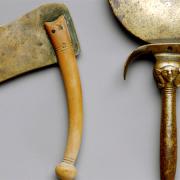
The Middle Ages are often seen as a retreat backwards into primitive life. There was much less innovation and invention than there was under the Egyptians, Greeks, and Romans. We quickly saw a move back to the untamed, untrimmed beards of old. That is, until the Catholic Church decided to get their way. During the Middle Ages, clerics were quick to distance themselves from the Jewish and Muslims. One way in which they did this was to force everyone to shave. In 1096, they introduced a law that banned beards.
Elizabeth I
Elizabeth I is regularly cited as the first person to begin using tweezers. It’s now a common part of any woman’s morning routine, but it originated over 500 years ago. Elizabeth I picked up the tweezers and took them to her eye brows to pluck them. She also used walnut oil, vinegar and ammonia to help reduce their appearance. All this created the appearance of an elongated forehead, which you can see in paintings to this day. It has since been adopted by women across the world. It was still another 400 years before anyone began to worry about hair below the neckline, however.
18th Century – the first personal razor
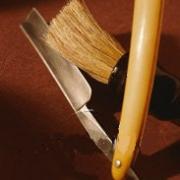
Until now, shaving was strictly kept to those who could access a barber. Standing in front of your own mirror and shaving was a very rare occurrence. Instead, you’d pay for a clean shave when you had your hair cut. That is, until the end of the 18th century, when Frenchman Jean-Jacques Perre invented the safety razor. He created a simple wooden guard over a traditional straight razor, and voila! Of course, they were still very expensive, and bought only by the rich for some time.
King C Gilette
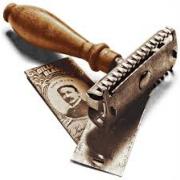
A travelling salesman and serial entrepreneur King C Gillette then created the razor we know today. In 1895, he solved a simple problem of Perret’s safety razor. It had no removable head, and ithad to be sharpened after every few weeks. Gillette (now a household name) created a removable and disposable razor blade. Once completed, Gillette secured a US army contract, putting a disposable razor in every soldier’s pack. It changed the world of shaving instantly.
Women jumped on the bandwagon
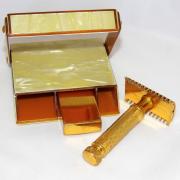
Until the early 20th century, shaving had been a male-dominated problem. However, in around 1915, women’s fashion mores began to relax. Skirts that showed the leg became popular, and so Gillette invented a razor blade especially for women. Until then, depilatory creams were the only method of hair removal for women.
Electric razors and Multiple Blades
And so we arrive in modern times, where electric razors and 5-blade cartridge razors are the norm. Invented by Jacob Schtick, the first electric razor failed quite spectacularly. However, it didn’t take long to perfect the design. Dry-shaving then quickly replaced traditional methods.
Today, the biggest problem shavers have is simply picking the best razor on the market that works for your face. 3-blade, 4-blade, or 6-blade are all available for your shaving pleasure. Figuring out what the best razor for you and trying to save money at the same time, well that is the tricky part and that is why shavemob.com is here to help.
Thanks for joining us on our weird and wonderful trip through the ages. We hope you learned a thing or two!
How Often Should I Change My Razor Blades?
Shaving Tips
This is the single biggest question we get asked every day by men and women and it’s not so easy to answer. Why? For the simple reason that shaving is subjective. Not everyone shaves the same or has the same hair thickness or has the same shape or the same preferences. Many factors go into the cartridge life and that is why there is no single answer to the question.
The key to determining when to change your razor blade is how you feel when your razor strokes your face. I can always tell, from the first swipe, that the blade needs changing. Usually about every ten days. Some people can make their cartridges last 30 or more. But you need a great razor blade to begin with.
There is a difference between cheap razor blades and inexpensive razor blades. Every man and woman wants a great shave, they are just tired of overpaying for it. But the key is quality. Just going overseas and importing a cheap razor blade is not the answer. Yes, they may be cheap enough to change your razors every few days but that doesn’t solve the problem. You need to have a razor of the same quality as the industry leaders. That puts the experience on an even playing field. Then make it less expensive than the bigger brands and now you can get the same shave experience, at a lower cost, and chose when you want to change your razor blades. Because the quality is just as good and the price is less there is no need to try to stretch the life of your razor blade. You can change it whenever you want to.
I may be one of the few out there, but I actually enjoy shaving in the morning and I shave in the shower. It is a great experience and starts my day off correctly. But I always make sure my razor blades are sharp or else my face feels horrible all day long.
If you think it’s time to change your razor blades, then why not start here at The Ultimate Shave.








